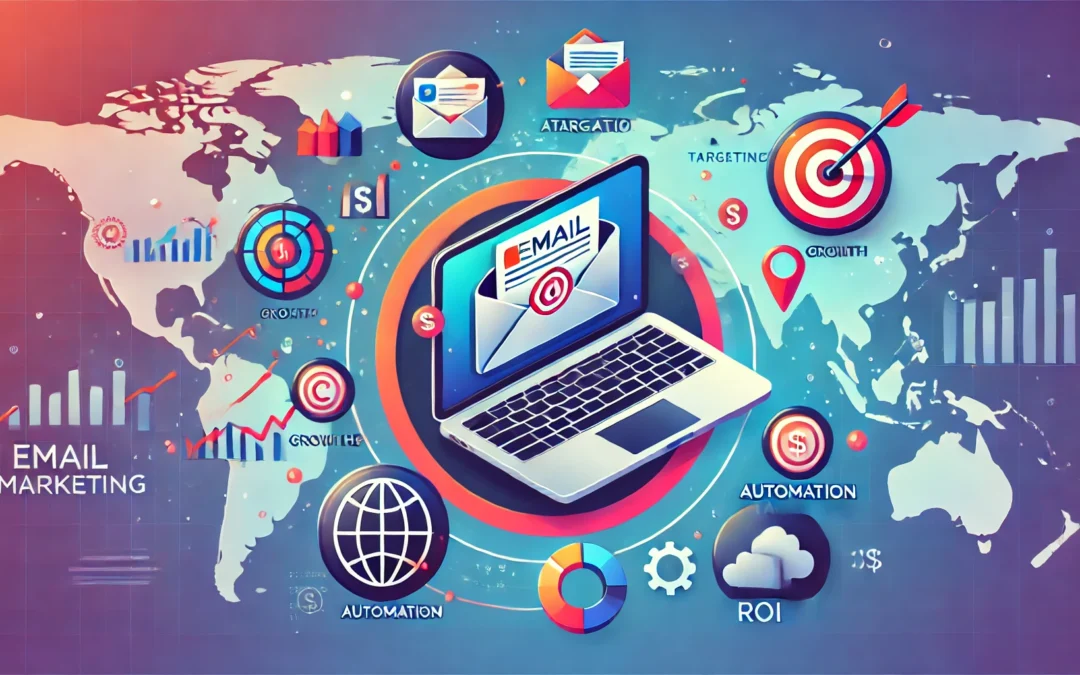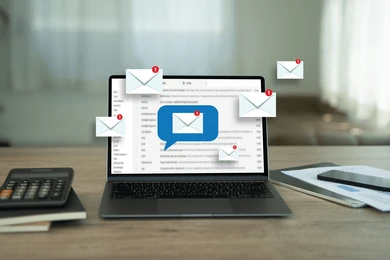Email marketing remains one of the most potent tools in the digital marketer’s arsenal. Despite the rise of social media and other digital communication platforms, email continues to offer a direct line to potential and existing customers. This blog post delves into the intricacies of email marketing, exploring its significance, best practices, trends, and statistics that underline its effectiveness.
Why Email Marketing?
Email marketing boasts an impressive return on investment (ROI). According to a report by the Data & Marketing Association (DMA), the average ROI for email marketing is $42 for every $1 spent. This high ROI is due to the personal nature of email, allowing marketers to deliver tailored content directly to their audience’s inbox.
Key Concepts in Email Marketing
- Segmentation: Dividing your email list into distinct groups based on demographics, behavior, or other criteria. Segmentation allows for more personalized and relevant content, increasing engagement rates.
- Personalization: Tailoring email content to individual recipients. This can range from using the recipient’s name to providing product recommendations based on past purchases. Personalized emails have been shown to generate six times higher transaction rates.
- Automation: Using software to send emails automatically based on predefined triggers or schedules. Automation is crucial for nurturing leads and maintaining customer engagement without manual effort.
- A/B Testing: Experimenting with different email elements (subject lines, images, call-to-action buttons) to see which versions perform better. A/B testing helps refine email strategies for maximum effectiveness.
- Responsive Design: Ensuring emails look good on all devices, especially mobile. With over 50% of emails now opened on mobile devices, responsive design is no longer optional.
Crafting Effective Email Campaigns
- Building a Quality Email List: Start with a permission-based email list. Use sign-up forms on your website, social media, and at events to collect email addresses. Offer incentives like discounts or exclusive content to encourage sign-ups.
- Compelling Subject Lines: Your subject line is the first thing recipients see. It should be concise, relevant, and enticing. A/B testing can help identify the most effective subject lines.
- Engaging Content: The body of your email should be engaging and provide value. This could be through informative articles, special offers, or personalized recommendations. Visual elements like images and videos can also enhance engagement.
- Clear Call to Action (CTA): Each email should have a clear objective, whether it’s driving traffic to your website, encouraging purchases, or gathering feedback. The CTA should stand out and be easy to follow.
- Optimization for Deliverability: Ensure your emails reach the inbox by following best practices for deliverability. This includes using a reputable email service provider (ESP), authenticating your emails, and regularly cleaning your email list to remove inactive subscribers.
Email Marketing Metrics
To gauge the success of your email marketing efforts, track key metrics such as:
- Open Rate: The percentage of recipients who open your email. A higher open rate indicates a successful subject line and sender reputation.
- Click-Through Rate (CTR): The percentage of recipients who click on links within your email. This measures the effectiveness of your content and CTAs.
- Conversion Rate: The percentage of recipients who complete a desired action, such as making a purchase or filling out a form.
- Bounce Rate: The percentage of emails that could not be delivered. A high bounce rate may indicate issues with your email list or deliverability.
- Unsubscribe Rate: The percentage of recipients who opt-out of your email list. Monitoring this rate helps you maintain a healthy email list.
Trends in Email Marketing
- Interactive Emails: Adding interactive elements like polls, quizzes, and carousels can boost engagement. Interactive content encourages recipients to interact directly within the email.
- Artificial Intelligence (AI): AI can enhance email marketing by providing deeper insights into customer behavior, automating content personalization, and optimizing send times.
- Hyper-Personalization: Beyond basic personalization, hyper-personalization uses data and AI to deliver even more tailored content. This could include dynamic content blocks that change based on the recipient’s preferences or behavior.
- User-Generated Content: Incorporating user-generated content (UGC) such as reviews, testimonials, and photos can add authenticity to your emails and build trust with your audience.
- Data Privacy: With increasing concerns about data privacy, it’s crucial to comply with regulations like GDPR in the EU and CCPA in California. Transparency and respect for user privacy can enhance trust and engagement.
Email Marketing in Different Regions
United States
The U.S. remains a leader in email marketing, with a highly developed digital marketing landscape. According to Statista, the number of email users in the U.S. is expected to reach 255 million by 2024. Marketers here benefit from advanced email marketing tools and a mature consumer market that responds well to personalized and automated campaigns.
United Kingdom
In the UK, email marketing is also highly effective. The DMA UK reports that 99% of consumers check their personal email every day. With a strong focus on data privacy and compliance with GDPR, UK marketers must ensure their strategies are transparent and respectful of user data.
India
India presents a growing opportunity for email marketers. With over 500 million internet users, the digital landscape is expanding rapidly. While challenges include lower open rates and deliverability issues, the potential for growth is significant. Marketers in India should focus on mobile optimization and localized content to connect with their audience effectively.
Email Marketing Tools
- Mailchimp: Known for its user-friendly interface and robust features, including segmentation, automation, and analytics.
- Constant Contact: Offers extensive templates and a drag-and-drop editor, ideal for small businesses.
- HubSpot: Provides advanced automation and CRM integration, making it suitable for larger businesses with complex needs.
- Sendinblue: Combines email marketing with SMS marketing and offers powerful automation features.
- ActiveCampaign: Known for its sophisticated automation capabilities and CRM integration.
Case Studies
Case Study 1: Charity Water
Charity Water, a non-profit organization, used storytelling in their email campaigns to drive engagement and donations. By sharing personal stories of those affected by clean water projects, they created an emotional connection with their audience. This approach led to higher open and click-through rates, ultimately increasing donations.
Case Study 2: Amazon
Amazon excels at personalized email marketing. By using purchase history and browsing behavior, Amazon sends highly targeted product recommendations to its customers. This strategy has significantly boosted their sales and customer loyalty.
Also Read: CMSp Web – Content Management and Website Development
Conclusion
Email marketing continues to be a powerful tool for businesses of all sizes. By understanding the key concepts, staying abreast of trends, and leveraging the right tools, marketers can create effective campaigns that drive engagement and ROI. Whether you’re targeting audiences in the US, UK, India, or other regions, adapting your strategies to local preferences and behaviors will enhance your success.
Statistics to Keep You Hooked
- ROI: For every $1 spent on email marketing, the average ROI is $42 (DMA).
- Open Rates: Emails with personalized subject lines are 26% more likely to be opened (Campaign Monitor).
- Engagement: Interactive emails can increase click-to-open rates by 73% (Litmus).
- Mobile: 54% of emails are opened on mobile devices (Litmus).
- Personalization: Personalized emails deliver 6x higher transaction rates (Experian).





